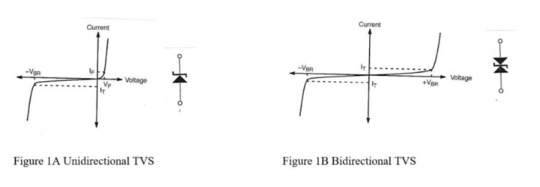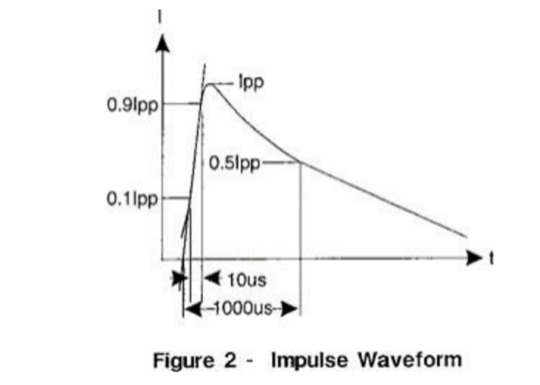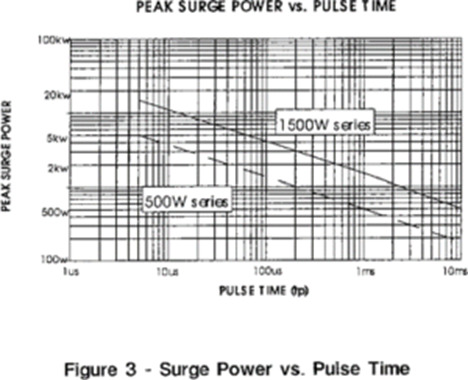#Bidirectional ESD
Explore tagged Tumblr posts
Text
https://www.futureelectronics.com/p/electromechanical--circuit-protection--esd-protection/esdalc6v1p6-stmicroelectronics-2113252
STMicroelectronics, ESDALC6V1P6, ESD Protection & Diode Arrays
ESDALC Series 4 Channel 6.1V Uni-Directional Transil™ ESD Protection - SOT-666IP
#STMicroelectronics#ESDALC6V1P6#ESD Protection & Diode Arrays#equipment#ESD tools#Bidirectional ESD#Electrostatic discharge protection#ESD suppressor diode#usb ESD protection#what is ESD protection#Diode Array devices
1 note
·
View note
Text
https://www.futureelectronics.com/p/electromechanical--circuit-protection--esd-protection/pgb1010603nr-littelfuse-4017083
Electrostatic discharge protection, diode arrays, Arrays Electrostatic induction
PGB1 Series 150 V 0.06 pF Bi-Directional 0402 SMT PulseGuard® ESD Suppressor
#Circuit Protection#ESD Protection & Diode Arrays#PGB1010603NR#Littelfuse#Electrostatic discharge protection#Arrays Electrostatic induction#Bidirectional#protection arrays#ESD protection equipment#USB ESD protection#ESD protection circuit
1 note
·
View note
Text
https://www.futureelectronics.com/p/electromechanical--circuit-protection--esd-protection/pgb1010603nr-littelfuse-3173322
Diode array manufacturers, USB ESD protection, ESD protection circuit,
PGB1 Series 150 V 0.06 pF Bi-Directional 0402 SMT PulseGuard® ESD Suppressor
#Littelfuse#PGB1010603NR#Circuit Protection#ESD Protection & Diode Arrays#manufacturers#USB ESD protection#ESD protection circuit#Bidirectional ESD protection diode#Diode Array devices#What is Circuit Protection#ESD protection equipment
1 note
·
View note
Text
https://www.futureelectronics.com/p/electromechanical--circuit-protection--tvs-diodes/usblc6-2sc6y-stmicroelectronics-1103009
Bidirectional ESD Protection, diode circuit, Low Capacitance TVS Diode Array
USBLC6 Series 2 Line 6 V Uni / Bi Directional ESD Protection - SOT-23-6
#Circuit Protection Devices#TVS Diodes#USBLC6-2SC6Y#STMicroelectronics#Transient Voltage Suppressor diode#High-voltage transients#circuit#Bidirectional ESD Protection#diode circuit#Low Capacitance Array#application#suppression diode
1 note
·
View note
Text
https://www.futureelectronics.com/p/electromechanical--circuit-protection--tvs-diodes/sm712-tct-semtech-1709229
Asymmetrical TVS Diode, USB TVS diode array, TVS diode circuit, esd tools
SM Series 12 V 400 W Asymmetrical TVS Diode for Extended Common-Mode - SOT-23
#Semtech#SM712.TCT#Circuit Protection Devices#TVS Diodes#capacitance#Bidirectional TVS diode application#Asymmetrical TVS Diode#USB TVS diode array#TVS diode circuit#esd tools#Transient voltage suppressors#TVS Diode manufacturers
1 note
·
View note
Text
How to choose silicon TVS Diode devices
These transient phenomena arise from the sudden release of stored energy, generated by various internal and external sources. Common causes of transients include normal switching operations of power supplies and electromechanical equipment, fluctuations in AC lines, lightning surges, and electrostatic discharge (ESD).

Silicon avalanche diodes feature large connection points to enable high surge current handling capability. Their key characteristics include extremely fast response time and low dynamic impedance in avalanche mode. TVS diodes offer several advantages, including:
Low clamping voltage
No wear limit
Compact physical size
Wide voltage range
High transient power dissipation
These devices are available in various axial lead and surface-mount plastic packaging. For applications requiring extremely high transient absorption capacity, MDE Semiconductor provides customized and standard TVS solutions, including a complete series of high-current stacked components.
However, regardless of the application, selecting specific device parameters involves understanding key TVS benchmarks and criteria.
TVS Key Terms
Before discussing how to choose a TVS, certain key terms must be defined:
l Minimum Breakdown Voltage (VBR): The voltage at which the TVS becomes transient (the device enters avalanche breakdown), creating a low-impedance path.
l Test Current (IT): The current at which the breakdown voltage is measured.
l Rated Working Voltage (VRWM): The maximum rated DC operating voltage, at which the TVS remains in a non-conductive mode (also known as the working voltage).
l Maximum Reverse Leakage Current (IR): The highest current measured during normal operation.
l Maximum Peak Pulse Current (IPP): The maximum allowable surge current the device can withstand.

Rated Power and Surge Waveform
One of the most widely recognized surge wave forms is the double exponential pulse (Figure 2), defined by its rise time (tr) and duration (tp). The pulse duration (tp) is the time for the pulse current to decay to 50% of IPP. For example, a 10 × 1000 μs pulse has a 10 μs rise time and decays to 50% of its peak value within 1 ms.
The rated power of a suppressor is the product of VC and IPP:
Pp = VC × IPP

Guidelines for Choosing the Correct Transient Voltage Suppressor
Leiditech recommends the following steps to select devices for optimal transient suppression:
1. Determine the circuit’s maximum DC voltage or continuous operating voltage, considering nominal voltage and “high-side” conditions.
2. Select a TVS with a reverse isolation voltage (VRWM) equal to or greater than the circuit’s operating voltage.
3. Ensure the TVS draws negligible current under normal operation. A too-low working voltage may cause avalanche breakdown or excessive leakage current, affecting circuit performance.
4. Evaluate Peak Pulse Power (Pp): Characterize the circuit’s transient conditions (waveform, source, and pulse duration). Choose a TVS that can dissipate the expected peak pulse power.
5. Specify Maximum Clamping Voltage (VC): Select a TVS with a clamping voltage lower than the threshold that could damage the circuit.
Unidirectional vs. Bidirectional TVS
A common misconception is that bidirectional TVS diodes are needed to suppress negative transient pulses. In reality, bidirectional TVS diodes are essential for:
l Communication applications or data lines with positive/negative signal oscillations.
l Applications requiring reduced capacitance.
For circuits with only positive signal levels, a unidirectional TVS is typically sufficient.
Operation principle:
l Under positive transients, the device avalanches and conducts in the reverse breakdown direction.
l Under negative surges, it conducts like a forward-biased diode, absorbing transient energy (except for low-capacitance devices, which must be bidirectionally connected to protect internal diodes from reverse surges).
Temperature Considerations
Transient voltage suppressors are designed for operation over a wide temperature range (typically -55°C to +155°C). For applications with specific temperature requirements, consider:
l Reverse Current (IR): Increases with temperature; refer to the datasheet for high-temperature leakage limits.
l Power Dissipation: Decreases as junction temperature rises. Peak power derates linearly from +25°C to the maximum rated temperature (Tmax); see the power derating curve for examples.
l Breakdown Voltage Temperature Coefficient (TCBV): Specified in the datasheet as the percentage change in VBR per degree Celsius.
If you’d like to learn more or have any questions, don’t hesitate to reach out:
Visit us at [en.leiditech.com]
#TVSDiodes #CircuitProtection #ESDProtection #SurgeProtection #Leiditech #ElectronicsDesign #PowerElectronics #TransientVoltage #TechTips #EngineeringSolutions #ElectronicComponents #DesignSmart #TVSGuide #EMCDesign
0 notes
Text
Understanding the Technical Specifications of SMBJ70CA-TR TVS Diodes
TVS (Transient Voltage Suppression) diodes, such as the SMBJ70CA-TR, play a crucial role in protecting electronic circuits from voltage spikes and electrostatic discharge (ESD). Understanding their technical specifications is essential for selecting the right component for your application. Let's dive into the key specifications of the SMBJ70CA-TR TVS diode and what they mean for your projects.

1. Breakdown Voltage (V_BR)
The breakdown voltage is the voltage at which the diode starts to conduct in reverse. For the SMBJ70CA-TR, the breakdown voltage range is typically between 77.8V and 95.7V. This means that when the voltage exceeds this range, the diode will begin to conduct, clamping the voltage to a safe level and protecting the circuit.
2. Stand-off Voltage (V_R)
The stand-off voltage is the maximum voltage that can be applied to the diode without it conducting. For the SMBJ70CA-TR, the stand-off voltage is 70V. This is the normal operating voltage below which the diode remains inactive. It’s crucial to ensure that the operating voltage of your circuit does not exceed this value.
3. Peak Pulse Current (I_PP)
The peak pulse current is the maximum current the diode can handle during a transient event. The SMBJ70CA-TR can withstand a peak pulse current of 1.3A (10/1000µs waveform). This parameter is vital for understanding the diode’s capacity to handle sudden surges and is a key factor in ensuring the protection of your circuit.
4. Clamping Voltage (V_C)
The clamping voltage is the voltage to which the diode clamps the transient event. For the SMBJ70CA-TR, the clamping voltage is 113V at a peak pulse current of 1.3A. This value indicates the maximum voltage your circuit will experience during a transient event, ensuring it remains within safe limits.
5. Power Dissipation (P_PP)
Power dissipation is the maximum power the diode can dissipate. The SMBJ70CA-TR has a peak pulse power dissipation of 600W (10/1000µs waveform). This parameter helps determine the diode’s ability to handle power surges without being damaged.
6. Response Time
The response time of a TVS diode is the time it takes to respond to a transient event. The SMBJ70CA-TR has a response time of less than 1 picosecond. This ultra-fast response ensures immediate protection for sensitive electronic components from voltage spikes.
7. Capacitance
The capacitance of a TVS diode affects the signal integrity in high-speed circuits. For the SMBJ70CA-TR, the capacitance is typically 150pF at 1MHz. Lower capacitance is preferred for high-frequency applications to avoid signal degradation.
8. Packaging
The SMBJ70CA-TR is packaged in an SMB (DO-214AA) package. This surface-mount package is suitable for automated assembly processes and offers a compact form factor for space-constrained applications.
9. Polarity
The SMBJ70CA-TR is a bidirectional TVS diode. This means it can protect against both positive and negative voltage transients, making it versatile for various applications where bidirectional protection is required.
10. Operating and Storage Temperature Range
The operating temperature range for the SMBJ70CA-TR is from -55°C to +150°C, and the storage temperature range is also -55°C to +150°C. This wide temperature range ensures reliable performance in diverse environmental conditions.
11. Qualification and Compliance
The SMBJ70CA-TR TVS diode complies with industry standards and qualifications, ensuring high reliability and performance. It meets the requirements of IEC 61000-4-2 (ESD) and IEC 61000-4-4 (EFT) standards, making it suitable for robust ESD and surge protection.
Conclusion
Understanding the technical specifications of the SMBJ70CA-TR TVS diode is crucial for ensuring the protection and reliability of your electronic circuits. By carefully considering parameters such as breakdown voltage, stand-off voltage, peak pulse current, clamping voltage, power dissipation, and response time, you can select the right TVS diode for your application. Additionally, factors like capacitance, packaging, polarity, and temperature range are important to ensure optimal performance and compatibility with your design requirements.
0 notes
Text
https://www.futureelectronics.com/p/electromechanical--circuit-protection--tvs-diodes/pesd1can-215-nexperia-6297154
USB Zener diode, Transient voltage suppression, Bidirectional TVS diode
PESD1CAN Series 70 V 17 pF SMT CAN Bus ESD Protection Diode - SOT-23
#Circuit Protection Devices#TVS Diodes#PESD1CAN#215#Nexperia#USB Zener diode#Transient voltage suppression#Bidirectional TVS diode#surge suppressor#LDO Voltage Regulator#Zener diode#application#TVS diode#transient voltage suppression diode
1 note
·
View note
Text

😮Unbelievable Deal Alert😮
Don't miss out on this exclusive offer from SUV System Ltd.! Get your hands on the top-notch SMA5J6.5A TVS Diodes manufactured by Vishay General Semiconductor at an unbelievable price of just 23+ 0.05 USD! 😱
Ideal for a wide range of applications including consumer electronics, automotive, industrial, and telecommunication, these diodes are a must-have for any electronic project requiring robust transient voltage suppression. Whether you're in consumer electronics, automotive, industrial, or telecommunications, these diodes are your go-to solution for safeguarding sensitive electronics against voltage fluctuations induced by inductive load switching and lighting. Plus, with variants available in both unidirectional and bidirectional configurations, versatility is guaranteed!
SUV System is your trusted partner for top-quality electronic components. With offices in Hong Kong and Shenzhen, and a fully stocked product warehouse, we offer a wide range of products from leading brands. We guarantee the authenticity and quality of every component we supply. With strict standards and certifications including ESD, ISO9001, ISO14001, ISO45001, and ISO13485, you can trust that you're getting the best of the best.
Don't wait any longer to secure this amazing deal, Contact us at [email protected]
Skype: [email protected]
or explore our wide range of semiconductor products at https://www.suvsystem.com/
0 notes
Text
ESD protection diode circuit
Next year, I will concentrate on learning about; ESD protection diode circuit, Protection diode bidirectional and Littelfuse, PGB1010603NR, Circuit Protection, ESD Protection & Diode Arrays.
0 notes
Text

Vishay General Semiconductor's top-notch SMA5J6.0A TVS Diodes at an unbeatable price of 23+ 0.05usd, only from SUV System Ltd., one of China's premier electronic component suppliers!
These TVS diodes boast a myriad of features including a low-profile package, making them perfect for automated placement. With a glass passivated chip junction and available in both unidirectional and bidirectional options, they offer excellent clamping capability and a very fast response time. Plus, they meet MSL level 1 standards, ensuring reliability even in demanding environments.
SUV System Ltd. is your trusted partner for electronic components, backed by our stringent quality management standards and certifications including ESD, ISO9001, ISO14001, ISO45001, and ISO13485. With offices in Hong Kong and Shenzhen, and a commitment to stringent quality management standards, we ensure that you receive only the best products.
Don't let this opportunity slip away! Order now by contacting us at [email protected]
Skype: [email protected]
or explore our wide range of semiconductor products at https://www.suvsystem.com/
0 notes
Text
Diodes Incorporated Introduces Space-Saving TVS with Superior ESD and Surge Protection for High-Speed I/O

【Lansheng Technology Information】On April 6, 2023, Diodes announced the launch of a new bidirectional transient voltage suppressor diode (TVS) to meet the market's demand for robust protection of high-speed data ports. The D3V3Z1BD2CSP is designed to meet protection against electrostatic discharge (ESD) shock and surge events. Primary applications for this product are high-performance computing hardware, I/O ports for smartphones, laptops and tablets, monitors, and game consoles.
While many competing products have to make a design compromise between strong surge protection features or low input capacitance, the D3V3Z1BD2CSP can provide both. Its extremely low capacitance value (0.3pF typical) does not interfere or prevent high-speed data communications, thus ensuring that signal integrity is maintained. Its high peak pulse current (10.5A typical) and low clamping voltage (5.3V) protect I/O ports and their sensitive electronic components from transient voltages. The risk of electrical overload damage caused by activities such as frequent hot swapping is thus avoided. The D3V3Z1BD2CSP complies with the IEC61000-4-2 immunity standard and provides robust ESD protection against ±20kV air and contact discharge, thereby increasing system reliability.
The D3V3Z1BD2CSP can be used to protect I/O interfaces such as USB Type-C®, DisplayPort™, HDMI™, and SD cards, carrying high-speed data transfer rates up to 20Gbps. The -55°C to +150°C operating temperature range ensures continuous protection in challenging product application environments.
Diodes' D3V3Z1BD2CSP TVS is packaged in an extremely compact DSN0603 wafer-level chip size package measuring only 0.6mm x 0.3mm x 0.3mm.
Lansheng Technology Limited, which is a spot stock distributor of many well-known brands, we have price advantage of the first-hand spot channel, and have technical supports.
Our main brands: STMicroelectronics, Toshiba, Microchip, Vishay, Marvell, ON Semiconductor, AOS, DIODES, Murata, Samsung, Hyundai/Hynix, Xilinx, Micron, Infinone, Texas Instruments, ADI, Maxim Integrated, NXP, etc
To learn more about our products, services, and capabilities, please visit our website at http://www.lanshengic.com
0 notes